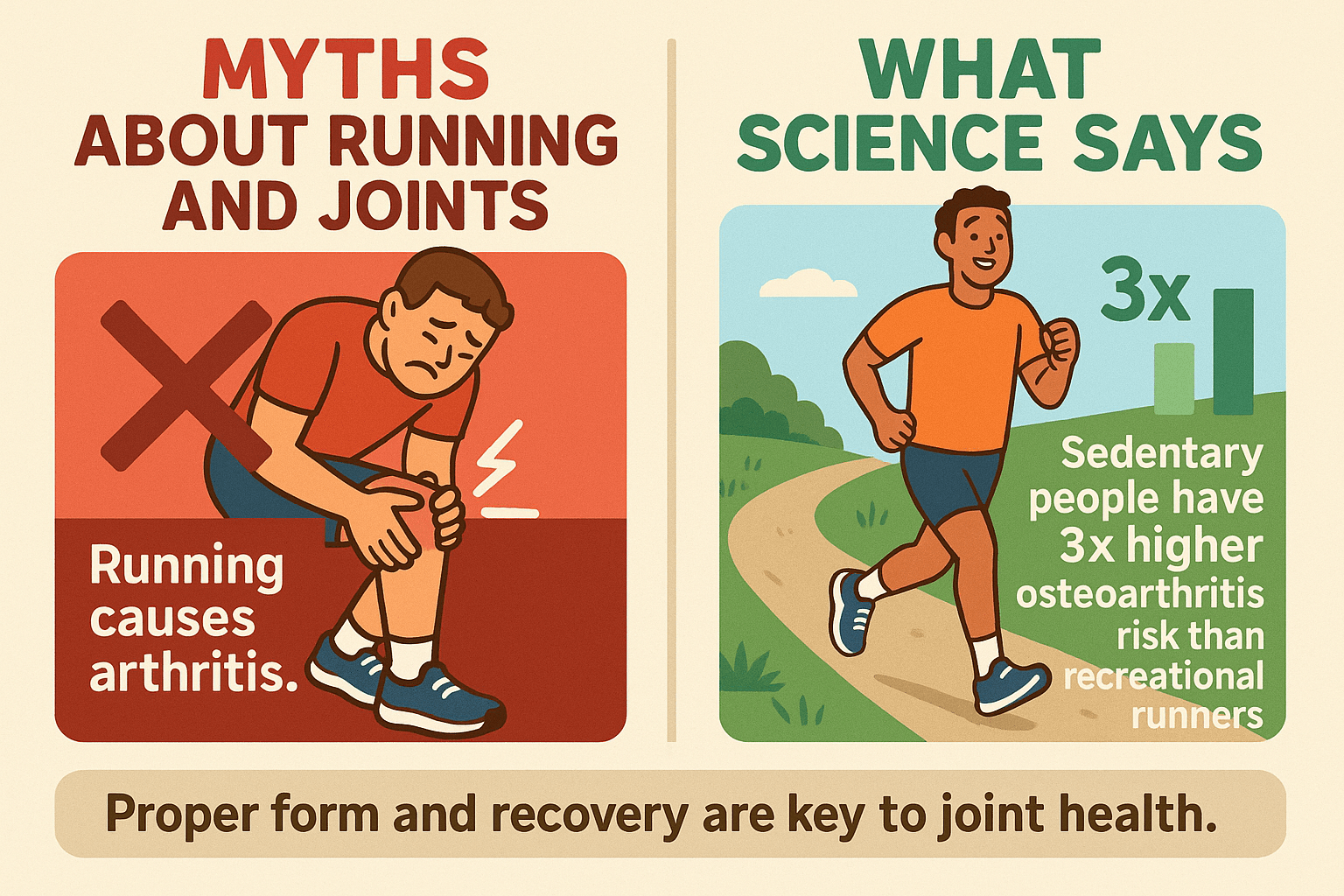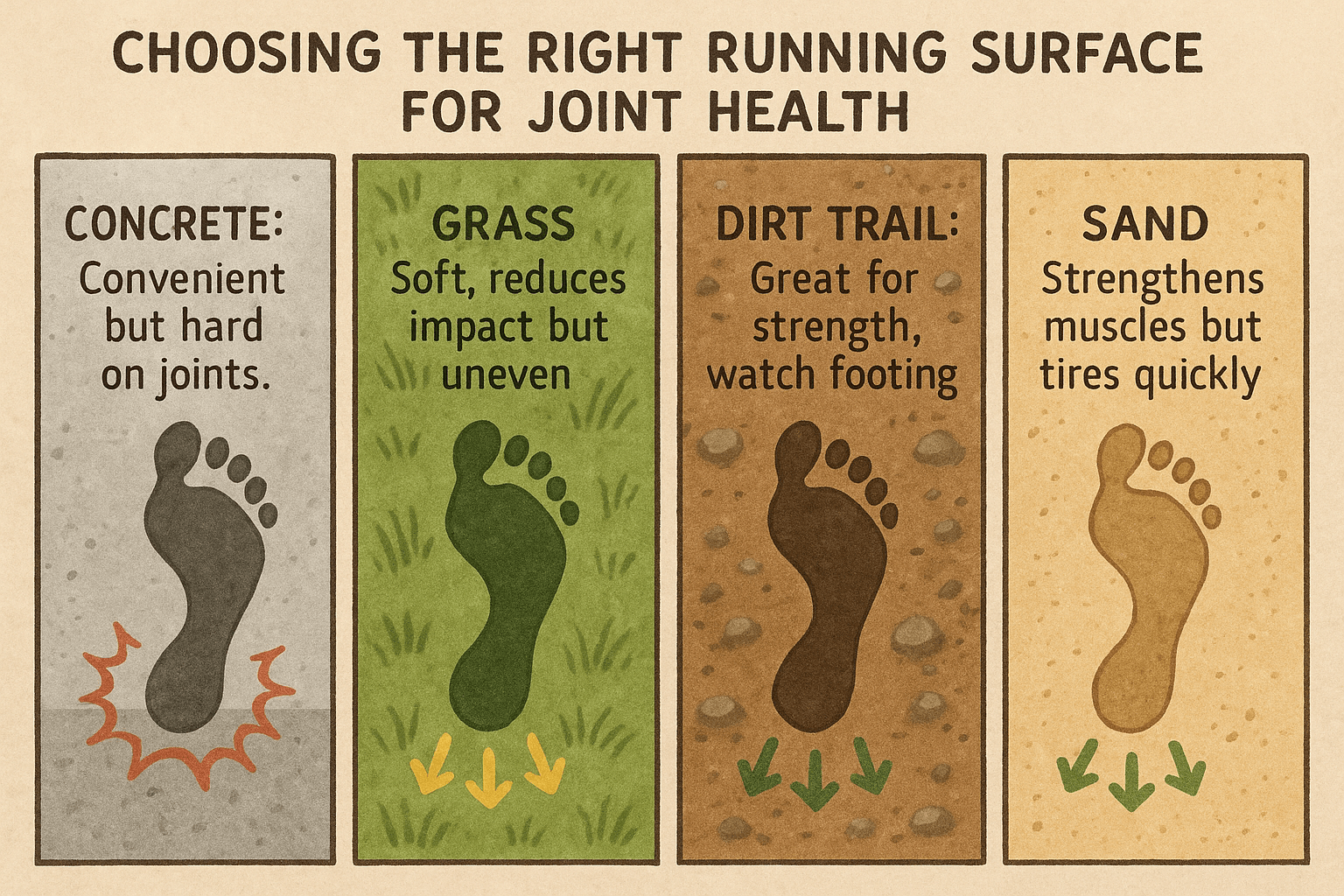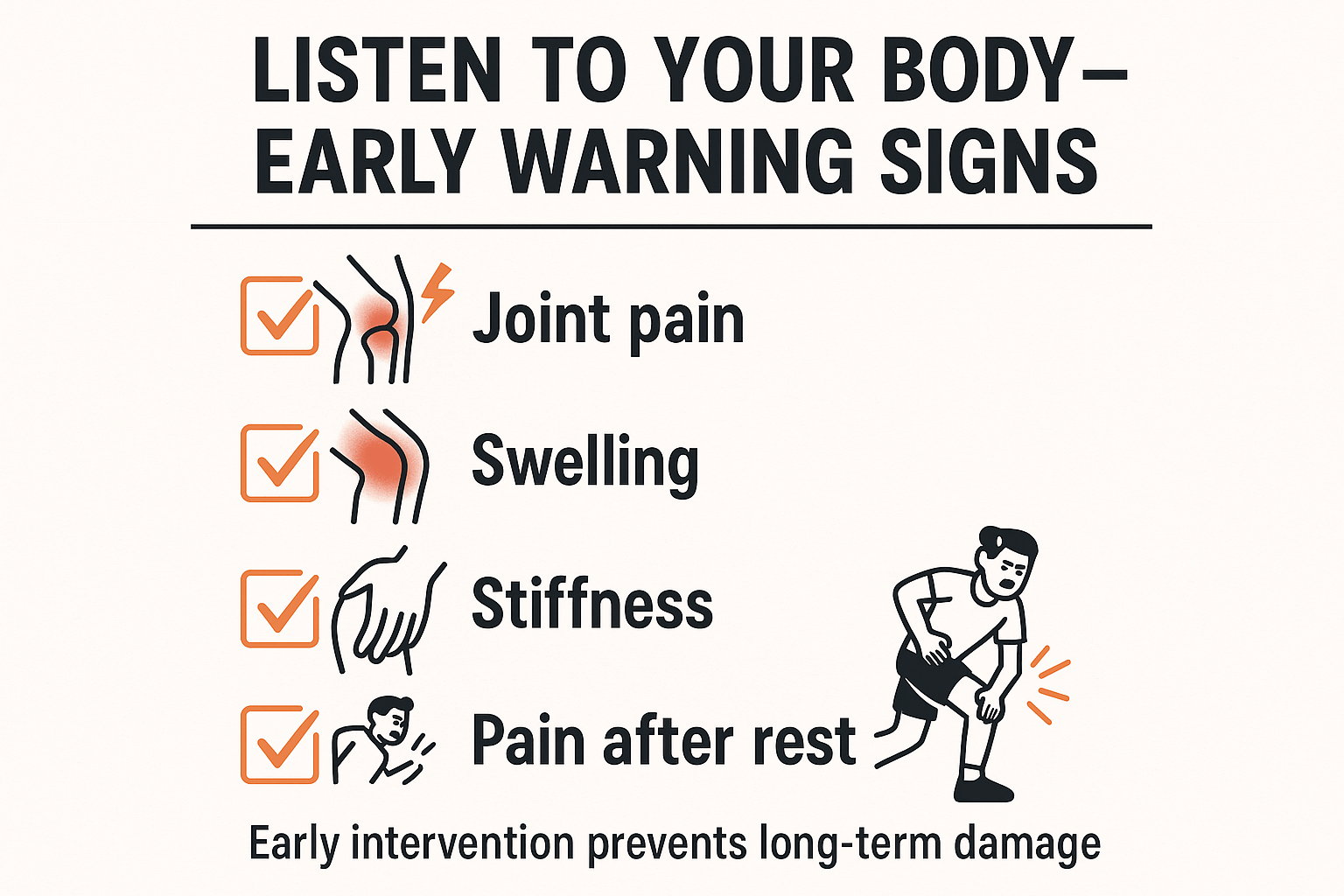A lot of runners worry about how running impacts their knees and joints. I’ve been there myself—put in tons of miles and felt those joint aches.
But honestly? Running has been one of the best things I’ve done for my body in the long run.
And hey, science has my back on this one too.
Let’s talk about how running affects your joints, what can go wrong, and how to keep them happy in the long run.
Spoiler alert: it’s not running that messes up your joints, it’s how you run and how you take care of your body between runs.
Let me get to it.
Running: The Good, The Bad, and The Myths
First off—running’s not automatically bad for your joints.
You won’t automatically end up with arthritis just from running. Studies show runners often have healthier knees than people who sit around all day.
But don’t get too excited just yet—let’s talk about where things can go wrong. Running’s great, but you’ve got to be smart about it to keep your body in check.
Myth #1: “Running Causes Arthritis”
The myth that running causes arthritis? It’s outdated and debunked. In fact, a study showed that sedentary people have nearly three times the risk of developing osteoarthritis compared to recreational runners.
But here’s the kicker: It’s all about how you run. And yep, form is everything.
The Real Risk: Overuse and Poor Form
Look, if you’re running every day without paying attention to your form and recovery, you’re asking for trouble.
Overuse injuries like patellar tendonitis or IT band issues? They’re no joke, trust me. And if you’re new to running, doing too much too soon will make your joints throw a tantrum.
Staying injury-free? It’s all about consistency and being smart with your effort.
So, What Actually Happens to Your Joints When You Run?
Believe it or not, running actually helps strengthen your knees. Studies show that regular running can help ‘condition’ your knee cartilage. Basically, it makes your knee cartilage stronger over time.
So, not only can your knees handle the stress, they actually adapt and get stronger.
But don’t overdo it—take it slow and steady. Too much of anything is still too much. If you’re running like you’re preparing for an ultra every day and skipping recovery, you’re setting yourself up for trouble.
Long-distance or high-volume training without proper rest? That increases your risk of joint issues big time.
The Power of Strengthening
Weak muscles? Yeah, they can cause joint issues. Think of your muscles like bodyguards for your knees. If your muscles aren’t strong enough, guess who gets the hit? Your knees.
That’s where cross-training comes in—things like strength training, biking, or swimming. Building up your quads, hamstrings, and calves gives your knees the backup they need.
Form Matters More Than You Think
Bad form? It’s like a fast track to injuries. If you’re landing on your heels or your foot is too far ahead of you, you’re asking for trouble. Focus on landing mid-foot and keeping your posture tall.
Small tweaks like this can save you from a lot of pain later on. Not sure about your form? Get someone to check it out. It’ll be worth it, and it could make a big difference in keeping you injury-free. You can also check my guide here.
What Can You Do to Protect Your Joints?
Here are few of my best tips to help protect your joints while performing high impact exercises.
Choose the Right Surface
I get it—concrete’s easy, and it’s everywhere. But it’s tough on your joints. So, why not mix it up?
Try switching it up with softer surfaces, like grass or dirt trails. It won’t get rid of the impact entirely, but it’ll definitely take the edge off.
I made the switch years ago, and my knees are much happier now.
Proper Footwear is Non-Negotiable
Look, I’ve been there—running in shoes that were on their last leg because they “still felt okay.” Don’t make that mistake.
Your shoes are your first line of defense for your knees. If your shoes are worn out, your knees will feel it.
Get fitted for shoes that match your foot type and running style. Don’t just grab any pair off the shelf. It’s worth the time and effort to find what works for you.
Build Those Muscles
Want to keep your knees in top shape? Add strength training to your routine.
Lunges, squats, and leg extensions—they’re your friends. These exercises help build the muscle stability your knees need so you’re not relying solely on the joint for support.
A bit of strength work goes a long way to keeping your knees strong and injury-free.
Don’t Forget to Rest
Rest is your secret weapon for recovery. I get it—rest might seem like slacking off, but trust me, your body needs it. It’s when your muscles and joints repair and get stronger.
After a tough run or training week, don’t skip the rest. Overtraining is the quickest way to turn healthy knees into sore ones. Your body will thank you for giving it the rest it needs.
Conclusion: The Takeaway
Running doesn’t have to hurt your knees—as long as you’re doing it the right way. Pay attention to your form, make time for recovery, and don’t skip your strength training. Your knees will thank you, and you’ll be running strong for years!
Quick Tips for Healthy Knees:
- Run with proper form to protect your knees
- Choose softer surfaces like grass or dirt to reduce impact
- Strengthen muscles around the knees for better support
- Get fitted for the right running shoes to protect your joints
- Allow for proper recovery between runs to prevent injury
FAQ
Can running cause knee arthritis? No, running itself doesn’t cause arthritis. In fact, studies show runners often have healthier knees than sedentary people. The key is to run with proper form and allow for recovery.
What’s the best surface for avoiding joint injuries? Softer surfaces like grass or dirt trails are easier on your joints compared to hard concrete or asphalt. Mix it up and avoid always running on hard surfaces.
How can I strengthen my knees for running? Strength training exercises like lunges, squats, and leg extensions help build muscle around your knees, providing better support and reducing the risk of injury.



